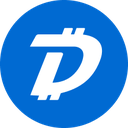-
 Bitcoin
Bitcoin $82,594.5712
0.40% -
 Ethereum
Ethereum $1,784.9704
0.39% -
 Tether USDt
Tether USDt $0.9995
-0.02% -
 XRP
XRP $2.1068
5.25% -
 BNB
BNB $591.1127
1.16% -
 USDC
USDC $1.0000
0.00% -
 Solana
Solana $117.0477
2.61% -
 Dogecoin
Dogecoin $0.1668
5.44% -
 TRON
TRON $0.2407
2.95% -
 Cardano
Cardano $0.6468
3.65% -
 UNUS SED LEO
UNUS SED LEO $9.4017
0.10% -
 Toncoin
Toncoin $3.3780
-5.26% -
 Chainlink
Chainlink $12.5724
0.81% -
 Stellar
Stellar $0.2583
1.78% -
 Avalanche
Avalanche $17.9801
-0.59% -
 Sui
Sui $2.2157
-1.98% -
 Shiba Inu
Shiba Inu $0.0...01219
0.52% -
 Hedera
Hedera $0.1625
3.95% -
 Polkadot
Polkadot $4.0562
3.40% -
 Litecoin
Litecoin $83.3634
1.79% -
 MANTRA
MANTRA $6.3429
1.06% -
 Bitcoin Cash
Bitcoin Cash $299.8989
1.04% -
 Bitget Token
Bitget Token $4.5113
0.27% -
 Dai
Dai $0.9999
0.00% -
 Ethena USDe
Ethena USDe $0.9994
-0.03% -
 Monero
Monero $215.9415
1.63% -
 Hyperliquid
Hyperliquid $11.5893
2.64% -
 Uniswap
Uniswap $5.8018
0.96% -
 Pi
Pi $0.5222
-7.36% -
 Pepe
Pepe $0.0...07044
7.37%
How are transaction fees in the NFT secondary market calculated?
NFT secondary market transaction fees include platform fees, creator royalties, gas fees, and payment processing fees, all of which can impact the overall cost and profitability of transactions.
Apr 04, 2025 at 05:28 am

The calculation of transaction fees in the NFT secondary market is a crucial aspect that both buyers and sellers need to understand. These fees can significantly impact the overall cost of transactions and the profits that sellers can make. In this article, we will delve into the various components that make up these fees, how they are calculated, and what factors can influence them.
Components of NFT Secondary Market Transaction Fees
Transaction fees in the NFT secondary market typically consist of several components. These include:
- Platform Fees: Most NFT marketplaces charge a fee for using their platform. This fee is usually a percentage of the sale price and can vary from one platform to another.
- Creator Royalties: Many NFTs come with a royalty agreement that entitles the original creator to a percentage of the sale price every time the NFT is resold. This percentage can range from 0% to 10% or more, depending on the terms set by the creator.
- Gas Fees: On blockchain networks like Ethereum, gas fees are charged to process transactions. These fees can fluctuate based on network congestion and the complexity of the transaction.
- Payment Processing Fees: If the transaction involves converting cryptocurrency to fiat currency or vice versa, there may be additional fees charged by payment processors.
Calculation of Platform Fees
Platform fees are straightforward to calculate. They are typically a fixed percentage of the sale price. For example, if a platform charges a 2.5% fee and an NFT is sold for 1 ETH, the platform fee would be:
[ \text{Platform Fee} = 1 \text{ ETH} \times 0.025 = 0.025 \text{ ETH} ]
Different platforms may have different fee structures. Some may offer tiered fees based on the volume of transactions or special promotions that reduce the fee for a limited time.
Calculation of Creator Royalties
Creator royalties are another important component of NFT transaction fees. These royalties are set by the NFT creator and are usually a percentage of the sale price. For instance, if an NFT has a 5% royalty and is sold for 1 ETH, the royalty would be:
[ \text{Royalty} = 1 \text{ ETH} \times 0.05 = 0.05 \text{ ETH} ]
This amount is automatically sent to the creator’s wallet upon the sale of the NFT. The royalty percentage can vary widely and is determined when the NFT is minted.
Understanding Gas Fees
Gas fees are a bit more complex as they depend on the blockchain network's current state. On Ethereum, gas fees are calculated based on the gas limit (the maximum amount of gas the transaction can use) and the gas price (the amount of ETH paid per unit of gas). The formula for calculating gas fees is:
[ \text{Gas Fee} = \text{Gas Limit} \times \text{Gas Price} ]
Gas fees can be highly variable. During times of high network congestion, gas prices can skyrocket, making transactions more expensive. Conversely, during periods of low activity, gas fees can be relatively low. Users can choose to set their gas price to expedite their transaction or save on costs.
Payment Processing Fees
Payment processing fees come into play when converting between cryptocurrencies and fiat currencies. These fees are typically a percentage of the transaction amount and can vary based on the payment processor used. For example, if a payment processor charges a 1% fee and the transaction involves converting 1 ETH to USD, the fee would be:
[ \text{Payment Processing Fee} = 1 \text{ ETH} \times 0.01 = 0.01 \text{ ETH} ]
These fees are less common in pure cryptocurrency transactions but can be significant when dealing with fiat conversions.
Factors Influencing Transaction Fees
Several factors can influence the transaction fees in the NFT secondary market. These include:
- Marketplace: Different marketplaces have different fee structures. Some may offer lower platform fees to attract more users.
- Network Congestion: On blockchain networks like Ethereum, high demand for transaction processing can lead to higher gas fees.
- Transaction Complexity: More complex transactions, such as those involving multiple NFTs or smart contracts, can incur higher gas fees.
- Currency Conversion: Transactions that involve converting between cryptocurrencies and fiat currencies can be subject to additional fees.
- Special Promotions: Some platforms may run promotions that temporarily reduce their fees, making it a good time to buy or sell NFTs.
Strategies to Minimize Transaction Fees
There are several strategies that buyers and sellers can use to minimize transaction fees in the NFT secondary market:
- Choose the Right Marketplace: Research different platforms to find one with lower fees. Some platforms may offer competitive rates to attract users.
- Time Your Transactions: On networks like Ethereum, gas fees can vary significantly throughout the day. Timing your transactions during periods of low network activity can save money.
- Batch Transactions: If you need to buy or sell multiple NFTs, consider batching them into a single transaction to save on gas fees.
- Use Layer 2 Solutions: Some platforms offer layer 2 solutions like Polygon, which can significantly reduce gas fees.
- Negotiate Royalties: In some cases, it may be possible to negotiate lower royalties with the NFT creator, especially if you are a frequent buyer or seller.
Impact of Transaction Fees on NFT Prices
Transaction fees can have a significant impact on the prices of NFTs in the secondary market. High fees can deter buyers, leading to lower demand and potentially lower prices. Conversely, low fees can encourage more transactions, increasing demand and potentially driving up prices. Sellers also need to consider fees when setting their prices, as high fees can eat into their profits.
Case Study: Ethereum vs. Other Blockchains
Ethereum is currently the most popular blockchain for NFTs, but it is known for its high gas fees. Let's compare it to other blockchains like Solana and Flow, which offer lower transaction fees:
- Ethereum: High gas fees, especially during peak times, can make transactions expensive. However, it has a large ecosystem and a wide variety of NFTs.
- Solana: Known for its low transaction fees and high throughput, making it an attractive option for NFT transactions. However, its ecosystem is still growing compared to Ethereum.
- Flow: Another blockchain with low fees, designed specifically for NFTs and gaming. It offers a more streamlined experience for users but has fewer NFTs available compared to Ethereum.
Each blockchain has its own trade-offs, and the choice depends on the specific needs of the buyer or seller.
The Role of Smart Contracts in Fee Calculation
Smart contracts play a crucial role in the calculation and distribution of transaction fees in the NFT secondary market. These self-executing contracts automatically enforce the rules and execute the transactions based on the predefined conditions. Here's how they work:
- Automatic Fee Calculation: Smart contracts automatically calculate the platform fees and creator royalties based on the sale price and predefined percentages.
- Fee Distribution: Once the fees are calculated, the smart contract distributes them to the appropriate parties, such as the platform, the creator, and the seller.
- Transparency: Smart contracts provide transparency by recording all transactions on the blockchain, ensuring that fees are calculated and distributed fairly.
This automation reduces the need for intermediaries and ensures that transactions are processed efficiently and accurately.
Future Trends in NFT Transaction Fees
As the NFT market continues to evolve, several trends are likely to impact transaction fees:
- Layer 2 Solutions: The adoption of layer 2 solutions like Polygon and Optimism can significantly reduce gas fees on Ethereum, making NFT transactions more affordable.
- New Blockchains: The rise of new blockchains designed specifically for NFTs, such as Flow and Tezos, may offer lower transaction fees and attract more users.
- Fee Competition: As more platforms enter the market, competition may drive down fees, benefiting both buyers and sellers.
- Regulatory Changes: Changes in regulations could impact how fees are calculated and distributed, potentially affecting the overall cost of transactions.
These trends suggest that the landscape of NFT transaction fees is likely to change, offering new opportunities and challenges for market participants.
Common Questions Related to NFT Secondary Market Transaction Fees
Q: How can I find out the total fees for an NFT transaction?
A: To find out the total fees for an NFT transaction, you need to consider the platform fee, creator royalties, gas fees, and any payment processing fees. Most platforms provide an estimated total fee before you complete the transaction, but you can also calculate it manually by adding up these components.
Q: Can NFT creators change the royalty percentage after the NFT is minted?
A: It depends on the platform and the smart contract used. Some platforms allow creators to change the royalty percentage, while others do not. It's important to check the specific terms of the platform and the NFT before purchasing.
Q: Are there any ways to avoid gas fees on Ethereum?
A: While you can't completely avoid gas fees on Ethereum, you can minimize them by timing your transactions during periods of low network activity, using layer 2 solutions, or choosing a different blockchain with lower fees.
Q: How do platform fees differ across different NFT marketplaces?
A: Platform fees can vary widely across different NFT marketplaces. Some platforms charge a fixed percentage, while others may offer tiered fees based on transaction volume or special promotions. It's important to research and compare fees across different platforms to find the best deal.
Q: Can transaction fees impact the value of an NFT?
A: Yes, transaction fees can impact the value of an NFT. High fees can deter buyers, leading to lower demand and potentially lower prices. Conversely, low fees can encourage more transactions, increasing demand and potentially driving up prices. Sellers need to consider fees when setting their prices to ensure they remain competitive.
Disclaimer:info@kdj.com
The information provided is not trading advice. kdj.com does not assume any responsibility for any investments made based on the information provided in this article. Cryptocurrencies are highly volatile and it is highly recommended that you invest with caution after thorough research!
If you believe that the content used on this website infringes your copyright, please contact us immediately (info@kdj.com) and we will delete it promptly.
- Bitlayer Bitcoin Lending: Understanding the Benefits
- 2025-04-04 23:00:12
- Bitcoin (BTC) Might Still Be in an Acceleration Phase, and at the end of this phase experience “a sharp and dramatic rally”
- 2025-04-04 23:00:12
- Solana (SOL) and Binance Coin (BNB) Market Trends and the Rising Star Coldware (COLD)
- 2025-04-04 22:55:12
- Rep. Keith Ammon Is Trying to Make New Hampshire the First State to Invest in Bitcoin
- 2025-04-04 22:55:12
- PsyFi’s Closure Could Upset the Solana Ecosystem
- 2025-04-04 22:50:11
- As of April 1, 2025, Ethereum (ETH) Finds Itself at a Crossroads
- 2025-04-04 22:50:11
Related knowledge
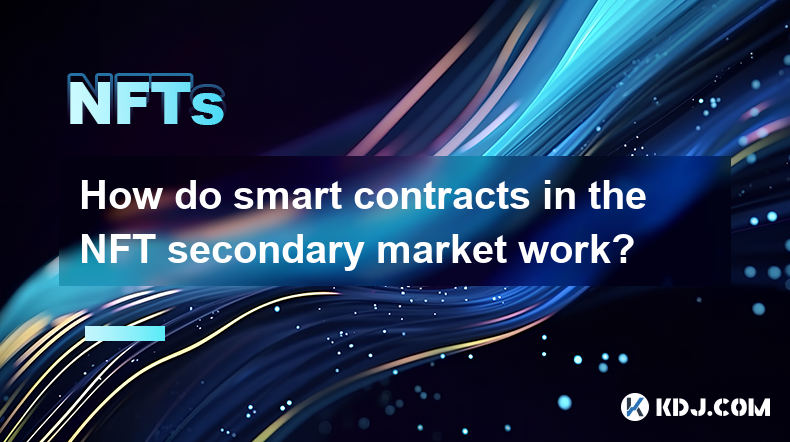
How do smart contracts in the NFT secondary market work?
Apr 03,2025 at 07:14am
Smart contracts play a pivotal role in the NFT secondary market, facilitating seamless transactions and enforcing predefined rules. These self-executing contracts with the terms of the agreement directly written into code are stored on the blockchain. In the context of NFTs, smart contracts automate the buying, selling, and transferring of digital asset...
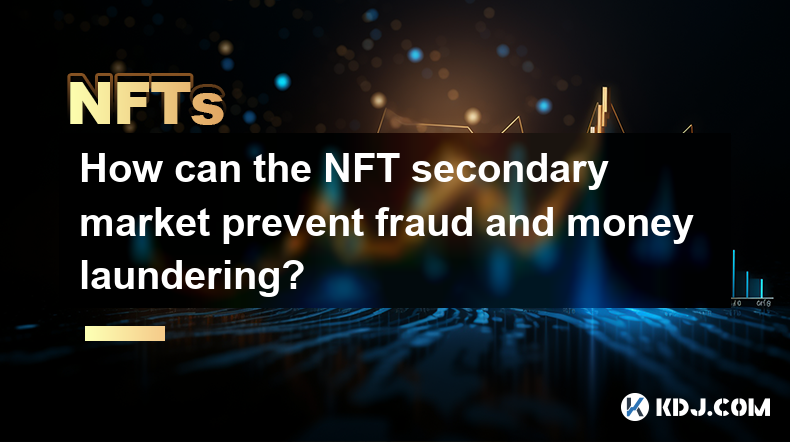
How can the NFT secondary market prevent fraud and money laundering?
Apr 03,2025 at 08:35am
The NFT secondary market has become a thriving hub for digital art and collectibles, but it also faces challenges in preventing fraud and money laundering. To tackle these issues, the market can implement various strategies and technologies to ensure a safer and more transparent trading environment. This article will explore how the NFT secondary market...

How are transaction fees in the NFT secondary market calculated?
Apr 04,2025 at 05:28am
The calculation of transaction fees in the NFT secondary market is a crucial aspect that both buyers and sellers need to understand. These fees can significantly impact the overall cost of transactions and the profits that sellers can make. In this article, we will delve into the various components that make up these fees, how they are calculated, and w...
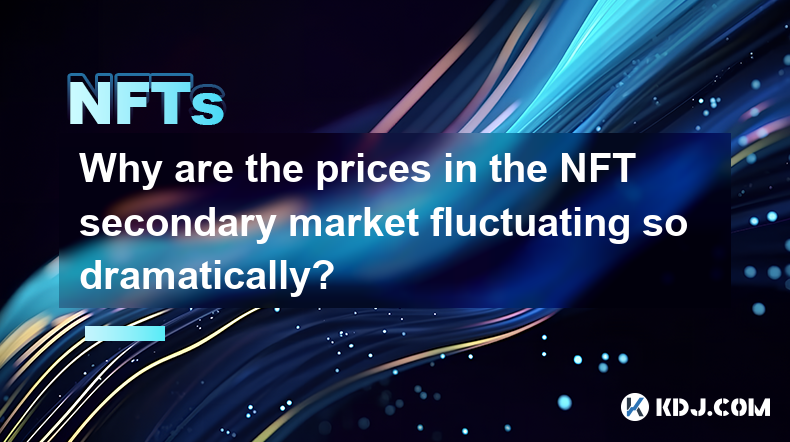
Why are the prices in the NFT secondary market fluctuating so dramatically?
Apr 03,2025 at 10:35pm
The NFT secondary market has been experiencing dramatic price fluctuations, leaving many in the cryptocurrency community puzzled and curious. To understand this phenomenon, it's essential to delve into the factors driving these price movements. From the impact of market sentiment and celebrity endorsements to the role of speculation and the unique natur...
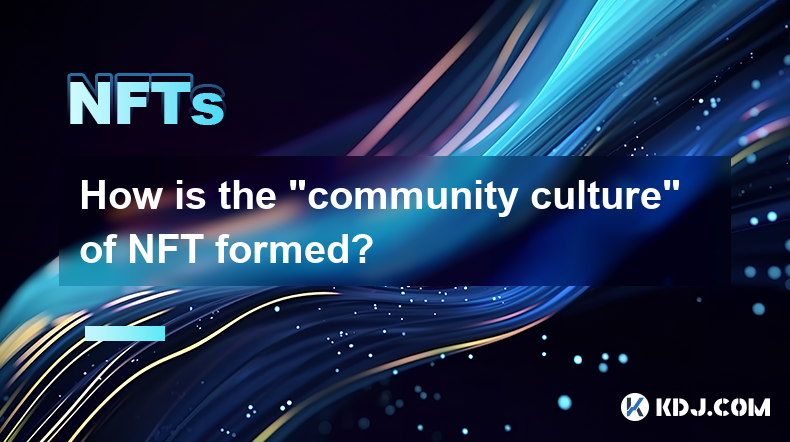
How is the “community culture” of NFT formed?
Apr 03,2025 at 11:07am
The formation of the 'community culture' within the NFT (Non-Fungible Token) space is a fascinating and multi-faceted process. It involves various elements such as shared interests, active engagement, and the creation of a sense of belonging among members. NFT communities often revolve around specific projects or artists, fostering a unique environment ...
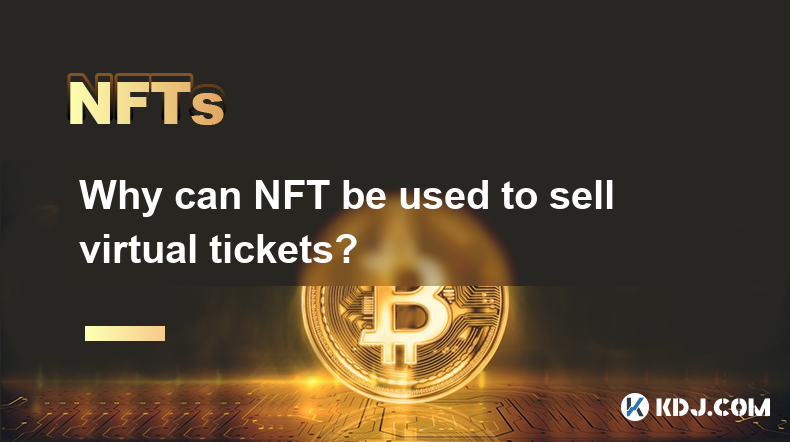
Why can NFT be used to sell virtual tickets?
Apr 03,2025 at 01:35pm
NFTs, or Non-Fungible Tokens, have revolutionized the way we think about digital ownership and value, particularly in the realm of virtual tickets. The primary reason NFTs can be used to sell virtual tickets is their unique nature. Unlike cryptocurrencies such as Bitcoin or Ethereum, which are fungible and can be exchanged on a one-to-one basis, NFTs ar...

How do smart contracts in the NFT secondary market work?
Apr 03,2025 at 07:14am
Smart contracts play a pivotal role in the NFT secondary market, facilitating seamless transactions and enforcing predefined rules. These self-executing contracts with the terms of the agreement directly written into code are stored on the blockchain. In the context of NFTs, smart contracts automate the buying, selling, and transferring of digital asset...

How can the NFT secondary market prevent fraud and money laundering?
Apr 03,2025 at 08:35am
The NFT secondary market has become a thriving hub for digital art and collectibles, but it also faces challenges in preventing fraud and money laundering. To tackle these issues, the market can implement various strategies and technologies to ensure a safer and more transparent trading environment. This article will explore how the NFT secondary market...

How are transaction fees in the NFT secondary market calculated?
Apr 04,2025 at 05:28am
The calculation of transaction fees in the NFT secondary market is a crucial aspect that both buyers and sellers need to understand. These fees can significantly impact the overall cost of transactions and the profits that sellers can make. In this article, we will delve into the various components that make up these fees, how they are calculated, and w...

Why are the prices in the NFT secondary market fluctuating so dramatically?
Apr 03,2025 at 10:35pm
The NFT secondary market has been experiencing dramatic price fluctuations, leaving many in the cryptocurrency community puzzled and curious. To understand this phenomenon, it's essential to delve into the factors driving these price movements. From the impact of market sentiment and celebrity endorsements to the role of speculation and the unique natur...

How is the “community culture” of NFT formed?
Apr 03,2025 at 11:07am
The formation of the 'community culture' within the NFT (Non-Fungible Token) space is a fascinating and multi-faceted process. It involves various elements such as shared interests, active engagement, and the creation of a sense of belonging among members. NFT communities often revolve around specific projects or artists, fostering a unique environment ...

Why can NFT be used to sell virtual tickets?
Apr 03,2025 at 01:35pm
NFTs, or Non-Fungible Tokens, have revolutionized the way we think about digital ownership and value, particularly in the realm of virtual tickets. The primary reason NFTs can be used to sell virtual tickets is their unique nature. Unlike cryptocurrencies such as Bitcoin or Ethereum, which are fungible and can be exchanged on a one-to-one basis, NFTs ar...
See all articles


















































































